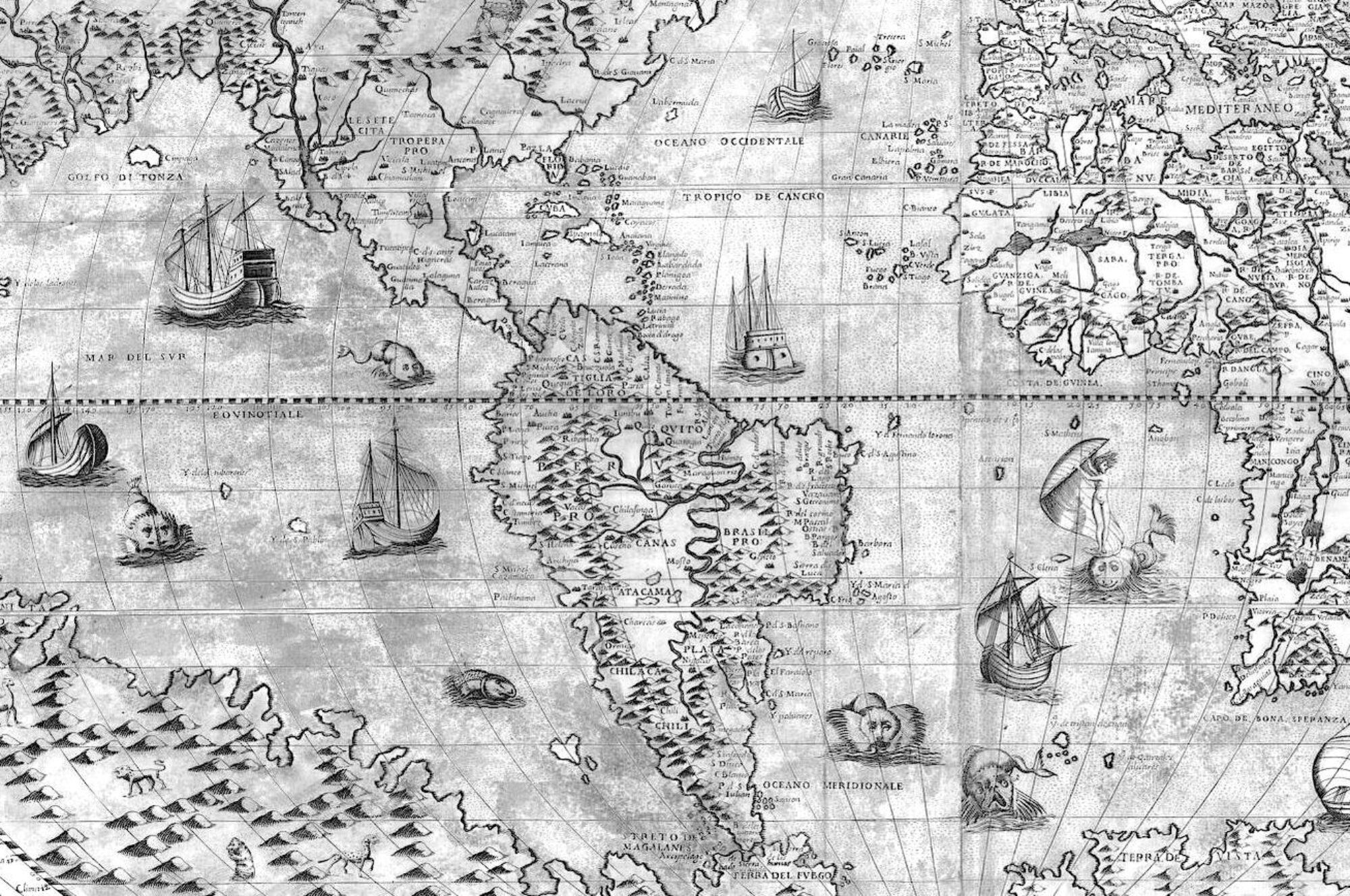I have a feeling that man’s fear of woman comes from having first seen her as the mother creator of men. Certainly it is difficult to feel compassion for the one who gives birth to man.
“I have learned from Henry [Miller]…
…to make notes, to expand, not to brood secretly, to move, to write every day, to do, to say instead of meditating, not to conceal the breaking up of myself under emotion.“
Anais Nin, from the Diary, Volume I
Sounds like sound activity to keep writing…
Paragraph like a poem from Anaïs Nin
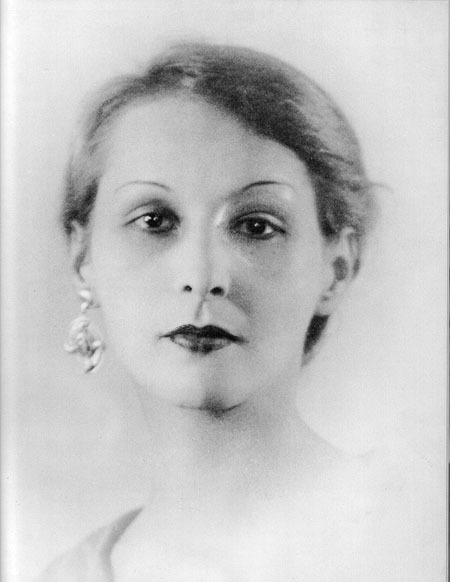 “It was not only that June had the body of the women who climbed every night upon the stage of music halls and gradually undressed, but that it was impossible to situate her in any other atmosphere. The luxuriance of the flesh, its vivid tones, the fevered eyes and the weight of the voice, its huskiness, became instantly conjugated with sensual love. Other women lost this erotic phosphorescence as soon as they abandoned their role of dance-hall hostesses. But June’s night life was internal, it glowed from within her and it came, in part, from her treating every encounter as either intimate, or to be forgotten. It was as if, before every man, she lighted within herself the lamp lighted by waiting mistresses or wives at the end of the day, only they were her eyes, and it was her face which became like a poem’s bedchamber, tapestried with twilight and velvet. As it glowed from within her, it could appear in totally unexpected places, early in the morning, in a neglected café, on a park bench, on a rainy morning in front of a hospital or a morgue, anywhere. It was always the soft light kept through the centuries for the moment of pleasure.”
“It was not only that June had the body of the women who climbed every night upon the stage of music halls and gradually undressed, but that it was impossible to situate her in any other atmosphere. The luxuriance of the flesh, its vivid tones, the fevered eyes and the weight of the voice, its huskiness, became instantly conjugated with sensual love. Other women lost this erotic phosphorescence as soon as they abandoned their role of dance-hall hostesses. But June’s night life was internal, it glowed from within her and it came, in part, from her treating every encounter as either intimate, or to be forgotten. It was as if, before every man, she lighted within herself the lamp lighted by waiting mistresses or wives at the end of the day, only they were her eyes, and it was her face which became like a poem’s bedchamber, tapestried with twilight and velvet. As it glowed from within her, it could appear in totally unexpected places, early in the morning, in a neglected café, on a park bench, on a rainy morning in front of a hospital or a morgue, anywhere. It was always the soft light kept through the centuries for the moment of pleasure.”
From the Diary, Volume I, writing about June (pictured), Henry Miller’s wife.
I especially love "the lamp lighted by waiting mistresses or wives at the end of the day” and “a poem’s bedchamber, tapestried with twilight and velvet” (the idea that a poem is like a little mansion, with different rooms for different functions). “In a neglected café, on a park bench, on a rainy morning in front of a hospital or a morgue” also calls up Paris to me…
I have always believed in Andre Breton’s freedom, to write as one thinks, in the order and disorder in which one feels and thinks, to follow sensations and absurd correlations of event and images, to trust to the new realms they lead one into. “The cult of the marvelous.” Also the cult of the unconscious leadership, the cult of mystery, the evasion of false logic. The cult of the unconscious as proclaimed by Rimbaud. It is not madness. It is an effort to transcend the rigidities and the patterns made by the rational mind.
Parts marked in The Bell Jar
“The same thing happened over and over:
I would catch sight of some flawless man off in the distance, but as soon as he moved closer I immediately saw he wouldn’t do at all.
That’s one of the reasons I never wanted to get married. The last thing I wanted was infinite security and to be the place an arrow shoots off from. I wanted change and excitement and to shoot off in all directions myself, like the colored arrows froma Fourth of July rocket.”
***
“Cobwebs touched my face with the softness of moths. Wrapping my black coat round me like my own sweet shadow, I unscrewed the bottle of pills and started taking them swiftly, between gulps of water, one by one by one.
At first nothing happened, but as I approached the bottom of the bottle, red and blue lights began to flash before my eyes. The bottle slid from my fingers and I lay down.
The silence drew off, baring the pebbles and shells and all the tatty wreckage of my life. Then, at the rim of vision, it gathered itself, and in one sweeping tide, rushed me to sleep.”
Other 2011 reading
Poetry
Poemas y antipoemas – Nicanor Parra
Everybody Loves The Situation – Michael Cirelli
Skin, Inc. – Thomas Sayers Ellis
Come on All You Ghosts – Matthew Zapruder
D. Nurkse
The Beauty of the Husband – Ann Carson
Books I didn’t finish
60 Stories (read about 4) – Donald Barthelme
The White Album – Joan Didion (only the title essay, though I was blown away by it. The rest were too time/place specific)
A Supposedly Fun Thing I’ll Never Do Again & Other Essays – David Foster Wallace (only read that one essay, that was enough)
Necromancer (I was interested in the science fiction elements, but I couldn’t get past page 3 -that worn-out detective/Blade Runner character is too played out at this point. Maybe not when this book was written…)
To compare to 2010, see here.
Books Read in 2011, Part II
I read 21 books in 2011. Here are #1-10, ranked from most insight/pleasure/ideas/inspiration derived from to least enjoyed…
****

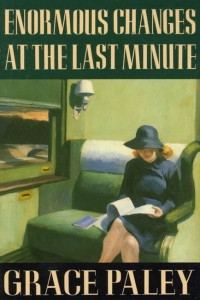 1. Enormous Changes at the Last Minute (Farrar, Straus & Giroux, 1974) – Grace Paley
1. Enormous Changes at the Last Minute (Farrar, Straus & Giroux, 1974) – Grace Paley
The story “Distance” changed what I thought it was possible to do with a short story. The voice most of all, how she just launches in. How it spans a period of time, how the narrator tells her own story as well as her son’s in one breath. How Paley is not afraid to say anything.
The “Faith stories” – Faith isn’t entirely likable, but she inhabits her. There is something weak about her – the way she is with men. The relationship between Faith and her parents.
A flavour of Brooklyn, Manhattan in the 1950s & 60s, tenement dwellers, urban people – Jews, latinos, blacks. The currents of activism, how they coursed through moms in the parks, too.
Sentences from “Distance”:
“Still, it is like a long hopeless homesickness my missing those young days. To me, they’re like my own place that I have gone away from forever, and I have lived all the time since among great pleasures but in a foreign town. Well, O.K. Farewell, certain years.”
“But don’t think I’m the only one that seen Ginny and John when they were the pearls of this pitchy pigsty block. Oh, there were many, and they are still around holding the picture in the muck under their skulls, like crabs.”
From the story “Debts”:
“There is a long time in me between knowing and telling.”
From the title story (it’s a prose poem a character wrote):
“The kids! the kids! Though terrible troubles hang over them, such as the absolute end of the known world quickly by detonation or slowly through the easygoing destruction of natural resources, they are still, even now, optimistic, humorous, and brave. In fact, they intend enormous changes at the last minute.”
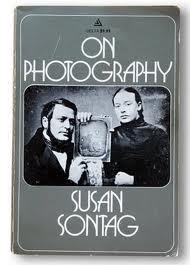 2. On Photography (Farrar, Straus and Giroux, 1977) – Susan Sontag
2. On Photography (Farrar, Straus and Giroux, 1977) – Susan Sontag
I started underlining passages & dog-earing pages, but it started happening on every page. So prescient & thought-provoking – so much of what she says is still (or more) applicable in terms of information/image overload, the manufacturing of nostalgia, the reign of irony, the fulfilment of the Surrealist ideology, the 20th century as the American century.
She is not afraid to bring the personal into her essays – her account of seeing photographs of WWII concentration camps as a child is her starting point in one essay. How it changed her, but how she still considered it exploitation, at some level.
Sontag is so opinionated, but nothing ever emerges as categorically good or bad, thank goodness. She’s clearly fascinated by photography, but unflinching about what it has taken away from (or how it has altered, transformed) human consciousness, our sense of reality, as well.
Quotes (out of many many possible options):
“Whatever the moral claims made on behalf of photography, its main effect is to convert the world into a department store or museum-without-walls in which every subject is depreciated into an article of consumption, promoted into an item for aesthetic appreciation.”
One that strikes me as appropriate to Tumblr:
“The course of modern history having already sapped the traditions and shattered the living wholes in which precious objects once found their place, the collector may now in good conscience go about excavating the choicer, more emblematic fragments.”
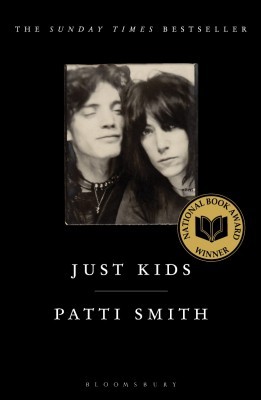 3. Just Kids (HarperCollins, 2010) – Patti Smith
3. Just Kids (HarperCollins, 2010) – Patti Smith
This book made me want to write, to collage, to love creative people, to not be afraid to hero-worship artists of the past (at the very least for their art), to call myself an artist, at least in my own mind. She is a hopeless romantic, not afraid to say so. I was also encouraged by how out of touch she actually felt with her own time, at times (the Warhol Factory people), was instead living with Rimbaud, her own vision of poetry. Reminded me of how Bob Dylan, seen as the bard of his time, spent years with early 20th century America (Guthrie). How Mapplethorpe affectionately called her “Soggy” because of her weeping bouts. How confusing she found her own time, and being young.
Her androgyny seems to have spared her some of the typical difficulties women face in “artist circles”. She has her own beauty, but I didn’t get the sense she was relegated to a sexual plane. Maybe also because many were gay artists… Especially vivid was the section on life at the Chelsea Hotel. Also loved her account of her love affair with Sam Shepard.
Quote:
“In my low periods, I wondered what was the point of creating art. For whom? Are we animating God? Are we talking to ourselves? And what was the ultimate goal? To have one’s work caged in art’s great zoos – the Modern, the Met, the Louvre?
I craved honesty, yet found dishonesty in myself. Why commit to art? For self-realization, or for itself? It seemed indulgent to add to the glut unless one offered illumination.”
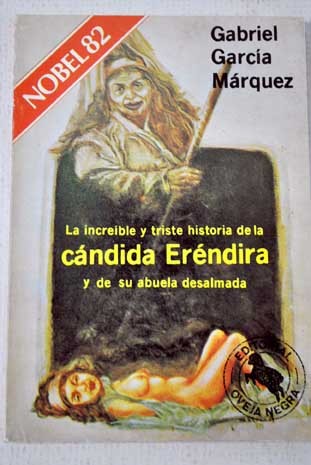 4. La increíble y triste historia de la Cándida Erendira y su abuela desalmada (1972)- Gabriel García Márquez
4. La increíble y triste historia de la Cándida Erendira y su abuela desalmada (1972)- Gabriel García Márquez
I read this in Cartagena, the prefect setting. “Un señor muy viejo con unas alas enormes” and “El ahogado más hermoso del mundo” are my favourite Márquez stories. They’re like prose poems, the image is in the end, what he’s after. (An ancient man with enormous, shedding wings in a cage, being fed like a chicken every day by a practical small-town woman; a gigantic man washing ashore & being bathed, dressed, beloved & mourned by an entire little town by the sea.)
I wasn’t crazy about the title story, his interest in rape, the deflowering of young women, but it’s almost as if he finds a kind of beauty in it, the traveling carnival air the story takes on.
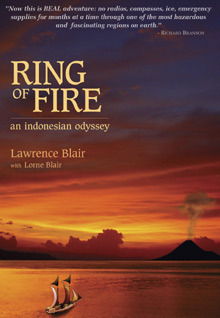
5. Ring of Fire: An Indonesian Odyssey (2010 reissue, first published 1988) – Lawrence Blair, with Lorne Blair
An adventure that doesn’t seem possible today. I was fascinated by the insights into the various cultures they visited on different Indonesian islands. Also how the people living in the thickest jungle survived through constant movement. There is a spiritual core to the book that makes you feel connected to the author, to the beautiful world out there & to the people he writes about.
6. Fellini on Fellini (Delta, 1977, first published in German, 1974) – Fellini
Essays, interviews, forewords for books: assorted thoughts by Fellini. I learned about his interest in Jung, his take on the 60s-70s (he was revolutionized by the sack dress!), the idea of the artist, his process of making films. Ultimately a hungry, curious, positive view of life.
Quote:
“We live in an age that has made a cult of methodology, that makes us weakly believe that scientific or ideological ideas have the edge over reality, and that is suspicious of fantasy, of individual originality, in other words of personality.”
7. Los detectives salvajes (1998) – Roberto Bolaño
The experimental form (different narrator in each chapter) took some getting used to -there’s no thread to hold onto, really. But it becomes dreamy, film-like. It’s about the loss of the Poet, youth, the Idea of Revolution. Made me feel as if I should read it a couple more times.
8. Madame Bovary (1856) – Flaubert, trans. Lydia Davis (2010)
Oh, the dangers of reading. How the ideas, imagination, fictions become preferable to reality… Sympathetic to the life of a woman, and then to M. Bovary, too. Luminous translation.
9. A Visit from the Goon Squad (2010) – Jennifer Egan
Ambitious, ballsy, engrossing, philosophical. About the passage of time, but the book itself is not excessively long – yes!
10. Too Much Happiness (2010) – Alice Munro
Short stories, first I’d read by Munro. They go to unexpected places, but with an expert hand. Many touch on death & grieving, but in a genuine way, not to give a narrative gravitas (I’ve found this is to be a go-to device with others to suddenly give an otherwise empty story meaning, raising the stakes, but doesn’t feel grounded).
Books Read in 2011, Part I
I read 21 books in 2011. Here are #11-21, ranked from most insight/pleasure/ideas/inspiration derived from to least enjoyed…
***
 11. Inferno (a poet’s novel) (OR Books, 2010) – Eileen Myles
11. Inferno (a poet’s novel) (OR Books, 2010) – Eileen Myles
Sexy, funny, tough. The first third is stunning, about her education, “becoming a poet”, leaving Boston, New York in the 70s, New York poets in the 70s. The middle third (about Poetry Project politics, her forgotten plays, her residency at a rich person’s house, getting her dog) is a bit flabby, you could feel her thinking – “I gotta work on this novel”, maybe she even writes that at one point. I loved the passage about women’s pussies, the different ones she had seen & their infinite range, the importance about loving the physicality of your own. A good counterpoint to Patti Smith’s memoir (Just Kids) that came out about the same time, which is about the same time period.
 12. Bossypants (Reagan Arthur Books, 2011) – Tina Fey
12. Bossypants (Reagan Arthur Books, 2011) – Tina Fey
Tina Fey is a very funny person you also would like to be friends with. Highlights: thoughts on doing a photo shoot for a big magazine; drama camp as a teenager; & her tips for life gleaned from improv comedy.
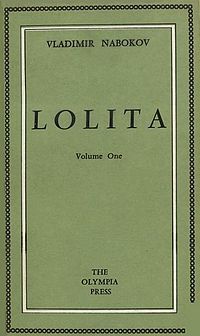 13. Lolita (Vintage, 1989, original published 1955) – Nabokov
13. Lolita (Vintage, 1989, original published 1955) – Nabokov
I know several people who would consider it blasphemy to have read 21 books and rank Lolita all the way down at No. 13. There were entire paragraphs I wanted to cut out & marvel at for a while, & sometimes it’s very morbidly funny, but overall, the book is dark, dark & what does it do in the world? A man destroys a childhood (but “Reader, she seduced me”), tells it as a love story. There is an uncomfortable sexiness to it until he actually has her, then the whole narrative shifts. Nabokov successfully paints the American landscape of the time – New England to California & cheap motels in between – which is a great feat. Humbert ultimately justifies his actions with the idea of love but I felt that other thoughts he let slip undermine this justification through “true love”… the idea of the nymphet, for example. He says that a nymphet is very rare, it’s not just a pre-pubescent girl, but then he’s slavering at every little girl that crosses his path. I also hate this book as a cultural signifier for sexiness – l think it used to be even more so in the 60s-70s, but even still look at Japan (not that this is Vladimir’s fault)… There’s a coldness to Nabokov’s novels that keeps me from drawing them too close. There has to be more than perfection in execution. Also, that Poe poem is not that great.
 14. The Bell Jar (1971, originally published in England, 1963) – Sylvia Plath
14. The Bell Jar (1971, originally published in England, 1963) – Sylvia Plath
I know Plath the Poet best & I was wowed by her ability to carry off a novel so neatly. It’s well structured & well paced. Esther Greenwood is not afraid to reveal her meanness, pettiness, cruelty, the grotesque visions everyone turns into when she is depressed. The New York part is the strongest, there seem to be omissions from the section on recovery (introspection as to whence the breakdown). Her description of a baby being born was truly viscerally terrifying. Interesting that Esther considers her visit to get a fitting for a diaphragm (before she ever has sex) a most significant step in her recovery: freedom.
[FUCK: my browser hiccuped and I lost everything I wrote about the books below & more on the book above. Maybe I will try to re-write at some point, but not now. Oh god not now. I hate repeating myself. But I want to publish this before 2011 is over. For the record. UPDATE: I re-wrote, but much more condensed versions.]
15. The Marriage Plot (2011) – Jeffrey Eugenides
I was totally engrossed with the novel & impressed with his portrayal of Madeleine, his female protagonist & college life at Brown in the 80s. But it wraps up too quickly; she becomes a disappointment.
16. Oryx and Crake (2003) – Margaret Atwood
Atwood takes our current disturbing tendencies (cultural obsessions with sex & violence, genetic engineering, consumerism to the point of destruction) to their logical conclusion & beyond. A convincing alternate world. The love story, however, was merely a plot device, not fully rendered.
17. Blue Label/Etiqueta Azul (2010) – Eduardo J. Sánchez
This won a prize for portraying the youth perspective on Venezuela in its current state of economic-political crisis. It does capture a lot of Venezuelan culture, but the fact that it’s a woman looking back at her life made it hard for me to swallow. Why would she care about a lot of this minutiae that happened 20 years ago? The relationships, situations were also overblown. Made me wonder why a young male author would write from a young female point of view.
18. Absurdistan (2006) – Gary Shteyngart
A recurring theme for me seems to be ‘loved the beginning, was slogging through the end’. Most true for this book. Hilarious, incisive portrayal of post-Soviet Russia, New York City in parallel, but then (once in Absurdistan), the satire gets too clever for its own good. Something about his portrayals of sex & women made me not want to read any of his other books. Also hated that he included a version of himself in it (the writer the love interest runs off with, ugh).
19. El prestigio de la belleza (2010) – Piedad Bonnett
The jacket copy said that it was a book about growing up as an “ugly” girl in a society that values beauty in women above all. That’s the book I wanted to read, not a sort-of memoir about a rebellious young girl, in which nothing much happens (she gets sent to a strict Catholic school away from home). She touches on how she manifested a lot of her discomfort in the culture via her body (gastric illnesses), but there is no introspection, reflection on it, it just happens.
20. Chronic City – Jonathan Lethem
I followed the convoluted plot, saved the clues, tried to understand the characters & care about the portrayal of the Upper East Side & this almost-version of New York. I put in this work as a reader, but it did not pay off. And soooo loooong tooooo, uuuugh.
 21. The Imperfectionists – Tom Rachman
21. The Imperfectionists – Tom Rachman
I had trouble getting all the way through this, to the point of being actively annoyed, but it was the only thing I had to read on a long plane ride, so I was stuck. Formulaic, often cliched writing. Its seams were showing, really felt like a first “novel”: a series of short stories about staff at an international, English-language newspaper based in Rome. All of the stories could be broken down into the formula “one-dimensional character finds him/herself in an extreme situation” (i.e., the super-shy copy editor gets cuckolded by his beautiful wife; the unambitious proofreader who is devoted to his son & nothing else loses the son; etc.) I can see why this was published – it appeals to the New Yorker-loving crowd who wants something light but that still feels literary. Rome is an exciting location, it gives an insider view of the newspaper life, etc. But I had a bad time reading it. New York Times bestseller? Really?
(Strange aside: I googled “gets cuckolded” to ensure this was correct usage (don’t think I have ever written out “cuckolded” before) & stumbled across many websites on tips for getting your wife to cuckold you! I didn’t know this was such a popular fetish… If you can dream it, it’s on the internet.)
Bought a Few Books Today
Purchased:
The Diary of Anais Nin, Volume I (1931-1934) (1966) & Volume II (1934-1939) (1967)
I read Volume I a couple of years ago & thought it was much better written than her fiction (I’ve read A Spy in the House of Love and Winter of Artifice). I’d like to read all of them. I like to think of the diary as the form she innovated. She didn’t just hand over a bunch of notebooks to her publisher, these are edited. I’ve read that some women were angry at what she left out – that they took her for a feminist model & thought it dishonest that she left out the fact that she was supported by her rich husband, etc… But I say: it’s a work of literature, the diary tells the truth in the way literature does, not in the way “true stories” do. I remember at one point she calls the diary her drug, her opiate – she lived through writing it. It’s interesting to think of it as a form, a formless form (non-narrative, or loosely narrative form), anarchic.
Take It by Joshua Beckman & Ventrakl by Christian Hawkey
As part of my freshly minted commitment to approach contemporary poetry with an open mind & open heart (rather than a jealous heart & negative mind). I heard Beckman read from Take It at KGB Bar & really enjoyed the reading. Everyone was buzzing about the Hawkey book last year, which is a hybrid with translation (??). Thought: maybe my difficulty with poetry (keeping up with everything being published, reading it in large quantities), is that I need so much space around it. Today I felt as if I had some breathing space in the reading room in my mind, like it could handle some poetry. This is rare, I don’t buy poetry books very often when browsing books.
The Bell Jar by Sylvia Plath
I read this in college & have been feeling like I need to read it again. I listened to it as an audio book while temping in an office in downtown Denver. I was working in the HR department of a tech company, the HR ladies didn’t really know what the company did. I was stuffing envelopes, sorting benefits materials, etc. with headphones on, usually dressed in black, I think. I felt very bad ass listening to Plath while they discussed the day of the week (“Ugh, it’s only Wednesday.” “At least tomorrow’s Friday.” “It’s Friday!”).
El examen por Julio Cortázar
I hadn’t even heard of this novel. He had his wife publish it posthumously (1986). He wrote it in the 50s. What finally convinced me to buy it was the references to his sense of humour in the jacket copy.
The Philosophy of Andy Warhol by Andy Warhol
This crossed my path at Spoonbill & Sugartown, it just looks like fun.
***
I got these 7 books, these riches, for $54! (Everything used except the Warhol book, I also traded in 3 used books, got $8 credit.)
Authors I noticed, to look into at some point: Geoff Dyer, Arthur Nesesian (never heard of him, but suddenly he was everywhere. Manhattan Loverboy was deemed “Best Book for the Beach, 2000” by Jane magazine, its jacket copy declared – what could this mean?).
Also, I got everything but Warhol & Beckman at Book Thug Nation, a used bookstore with a terrible name, but an amazing selection of literary fiction, particularly in view of its tiny space. Bookstores like this have been disappearing, places that you can tell are owned by people who love literature, serious literature.
A New-Old Thought on Writing Fiction
I remembered this after reading an article, I think in Poets & Writers, about how fiction is all about characters, creating believable, memorable characters & that didn’t seem right to me. That doesn’t locate what I seek or what I find in fiction.
One of the things I have to keep reminding myself of is that there are many models for fiction. Writing fiction seems daunting when I think of it in the journalistic sense – telling a story “straight”. Or when I think of writing historical fiction, with its copious research and endless opportunities for making a mistake. Or character-based fiction, that requires a consistent psychology. The reasons I don’t like reading Henry James (blasphemy), or the kinds of books we pick for my book club, once in a while (novels like The Girl Who Fell from the Sky).
But then I remember that I’ve always preferred alternative models, not through any willful posturing on the side of the experimental, but rather because of how those books struck me at a gut level. It’s about what the writing does rather than any personal attachment to the characters. For example, Kundera – it was the author’s insertion of himself into the story, the philosophical perspective he took that struck me, the gesture of standing back and moving the characters around while asking questions (The Unbearable Lightness of Being). Cortázar – the collage aspect of Rayuela, the play with words, play with form he enacts through the course of a single novel (and his sense of humour of course). Virginia Woolf – the intensely internal feeling of her narrative, the shifts in perspective (Mrs. Dalloway). And then alternative models like Violette Leduc & Marguerite Duras, something between memoir, journal & fiction, an unflinching voice that comes through. Anais Nin’s diaries, Julian Barnes… The writing stays, makes its mark, more than a straight-shooting noel.
(There are some exceptions. James Baldwin’s Another Country I love, J.D. Salinger’s characters are like people to me. Lorrie Moore’s stories.)
I have to keep this in mind when forging forward with writing prose, so it feels like a place I’m welcome in & like it’s something I want to do.
Related reading: more Lydia Davis!
